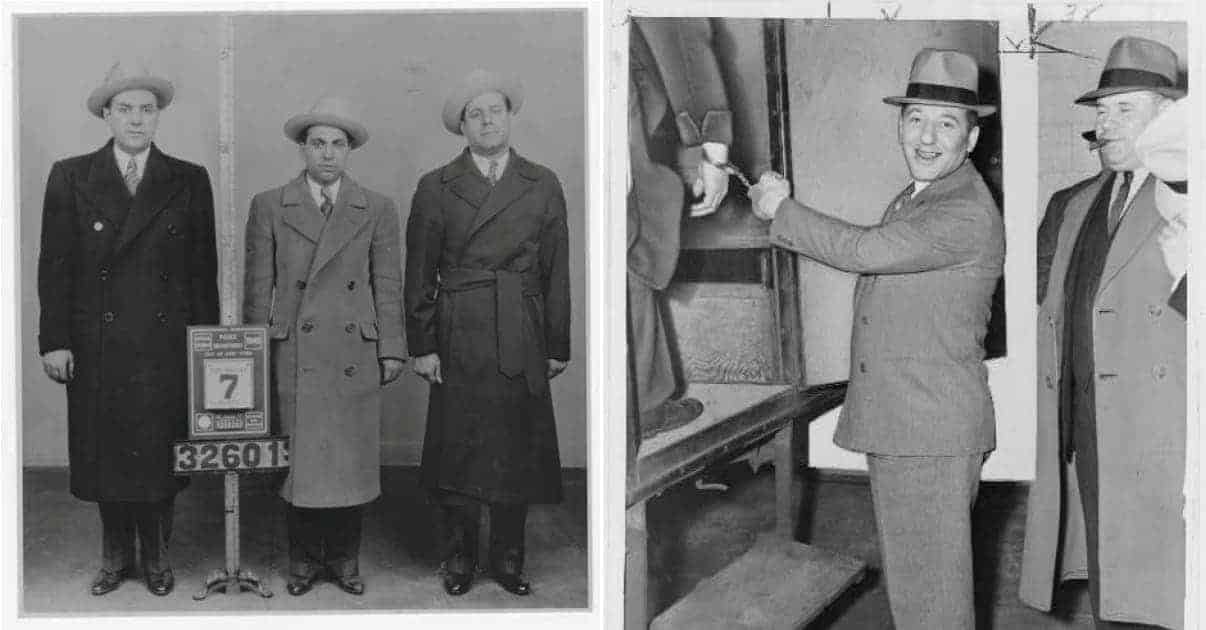Over a period of nearly a decade, beginning in the early 1930s, the Italian-American mafia ran an execution squad of contract killers, that murdered dozens or hundreds of people each year. Although the mafia’s squad of professional hitmen operated throughout the breadth and width of the United States, killing an estimated 1000 people in less than a decade, authorities had no inkling of its existence until 1940. After the execution squad’s existence came to light, it was dubbed Murder Incorporated by the day’s sensationalist press, and under that label, it went down in infamy as the deadliest ever criminal outfit in American history.
Oddly enough, one of the goals of setting up Murder Incorporated – often shortened to Murder Inc. – had been to reduce overall violence in organized crime. The primary role of the team of hitmen was to act as the muscle and enforcers of the mafia’s higher ups. Those higher ups also sought to assert a monopoly on “legit”, or at least acceptable, killings in organized crime. In theory, killings had to be preapproved and sanctioned by the mob’s higher ups, who would hand over the task of killing to mafia’s own Murder Inc. retained killers. Theory and reality never quite matched, but it was an ambitious goal that, thanks to Murder Inc., seemed within reach for at least some time during the 1930s.

Following are ten fascinating facts and figures relating to Murder Inc., the American mafia’s death squad.

Murder Inc. Was the Mafia’s Killers-on-Retainer Troubleshooter Squad
From the early 1930s to early 1940s, the Italian-American mafia’s oversight board, The Commission, kept a coalition of Italian and Jewish gangsters as retained contract killers. Dubbed “Murder Incorporated” or “Murder Inc.”, the hitmen were the mob leadership’s on-call execution squad. During its existence, Murder Inc. enforced The Commission’s will and regulated the underworld by taking out the troublesome, making them, literally, the mob’s troubleshooters.
Murder Inc. was formed in the early 1930s, following a period of chaotic gang warfare that had greatly disrupted mafia activity. After the dust settled, the Italian-American mafia was reorganized in a more streamlined structure, to enable the mafia to pursue its illicit activities in a business-like manner, with as few disruptions as possible. That was accomplished by setting up what came to be known as “The Commission” – a collective leadership council, akin to a board of directors – to oversee broad strategy and settle disputes. Murder Inc. was the muscle that would do the actual dispute settling.
It was the brainchild of Jewish-American labor racketeer Louis “Lepke” Buchalter. In essence, it was a streamlined contract killing system, intended to isolate mafia members from any connection with the necessary murders that went with their line of business. Murder Inc. operated out of a 24 hour Brownsville coffee shop called Midnight Rose, where the killers whiled away the time, ready at a moment’s notice to go out on a job once word came down.
After its founding in the early 1930s, Murder Inc. was initially led by its creator, Louis “Lepke” Buchalter, until he was arrested in 1936. The execution squad was then taken over by the colorful Albert “The Mad Hatter” Anastasia, also known as the “Lord High Executioner”. Both Buchalter and Anastasia are discused in greater detail further on in this article.
Much of Murder Incorporated’s work took place in and around New York City, but the retained killers’ reach was nationwide, and they carried out hits as far away as Detroit, southern Florida, and Los Angeles. The organization existed for barely a decade, from its founding in the early 1930s to its exposure in 1940. During that relatively brief period, the hitmen of Murder Inc. carried out an estimated 1000 contract killings.

